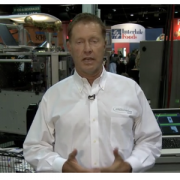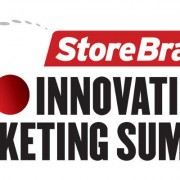Packaging World talks about Personalized Packaging
February 2011 | PACKAGING WORLD 7
The commercial printing industry has a technology that could migrate to packaging and have a sizable impact. It’s called personalization, and it rests on a three-legged stool of variable printing, affinity marketing, and automated route sequencing.
Variable Printing
Let’s start with variable printing. Packaging professionals are plenty familiar with it. Lot and date-code information, for example, must vary from time to time, and even the time of day may be required on cartons or bottles or labels. This variable data is imprinted by software-driven laser, ink-jet, or thermal-transfer printers. The net result is that packages produced on a single line are
not all identical. The variable data printed on them makes them customized to an extent.
This relatively simple customization is taken to a whole new level in commercial printing, where mere “customization” is elevated to “personalization.” Take, for example, the magazines mailed to millions of households each day. At high speeds, a unique name, address, and zip code are all imprinted on each cover. The personalization doesn’t end there. As those magazine pages
are assembled and bound, all kinds of blow-in cards, tip-in perfume samples, and “time-to-renew-your-subscription” cover wraps may be required in some of the magazines, but not all. It depends on the demographic of the household to which the magazine is being mailed.
This detailed demographic information is stored in a database. Sophisticated programming and controls technology gets the data from the database to the bindery lines. That’s how the perfume samples get inserted into specific magazines but not all magazines.
Affinity Marketing
As this kind of personalization is transferred to today’s packaging lines, it will lead to a whole new level of affinity marketing. That’s a strategy whereby a Consumer Packaged Goods company targets not the whole universe of consumers but rather a narrow slice of consumers having a shared interest. A good example might be an interest in high school football.
Armed with the right consumer database and a controls platform capable of using that data to print variable information on packages at line speeds, a CPG company could personalize cans of chili by high school. So consumers in Plano, TX, would encounter in the supermarket a point-of-purchase display where the can labels have imprinted on them the name, football statistics, grade-point average, and extracurricular activities of the team captain at Rock Creek H.S., at West Plano H.S., at North Plano H.S., and so on. Same product, same cans, same label graphics, but the package has been personalized thanks to the controls platform and the database it draws upon.
Consumers encountering such a display have a strong affinity—a natural liking or attraction—for the cans bearing their high school football “hero.” That affinity, created through personalized packaging executed at line speeds, engages consumers in a way that a one-size-fits-all package never could.
Automated Route Sequencing
Ah, but how, you ask, does the supply chain deal with such maddening extremes of personalization? Through automated route sequencing. Pallets are labeled with variable printing, too. Drawing on the database, the controls platform removes all route-to-market challenges.
Among those who are in a position to expand the use of personalized packaging in the North American marketplace is Bill Akins. He’s president of Genofish, a company that launched a portal called SupplierHub about 14 months ago whose sole purpose is to help Walmart communicate more effectively with the many manufacturers that supply Walmart’s various private brands.
“The new currency for doing business with leading retailers like Walmart and Target is consumer insight,” says Akins. He’ll expand on this and other related subjects at the April 26 Packaging Automation Forum in a presentation demonstrating how a partnership of controls technology, digital imaging, and cutting-edge logistics can contribute to store-centric micromarketing.
To learn more about the Packaging Automation Forum, sponsored by Packaging World and Automation World, visit www.packworld.com/paf. In the meantime, bone up on personalized packaging. “Having called on Walmart as a CPG manager for nearly fifteen years, I know they are phasing out of the one-size-fits-all business,” says Akins.
Getting personal
www.packworld.com


